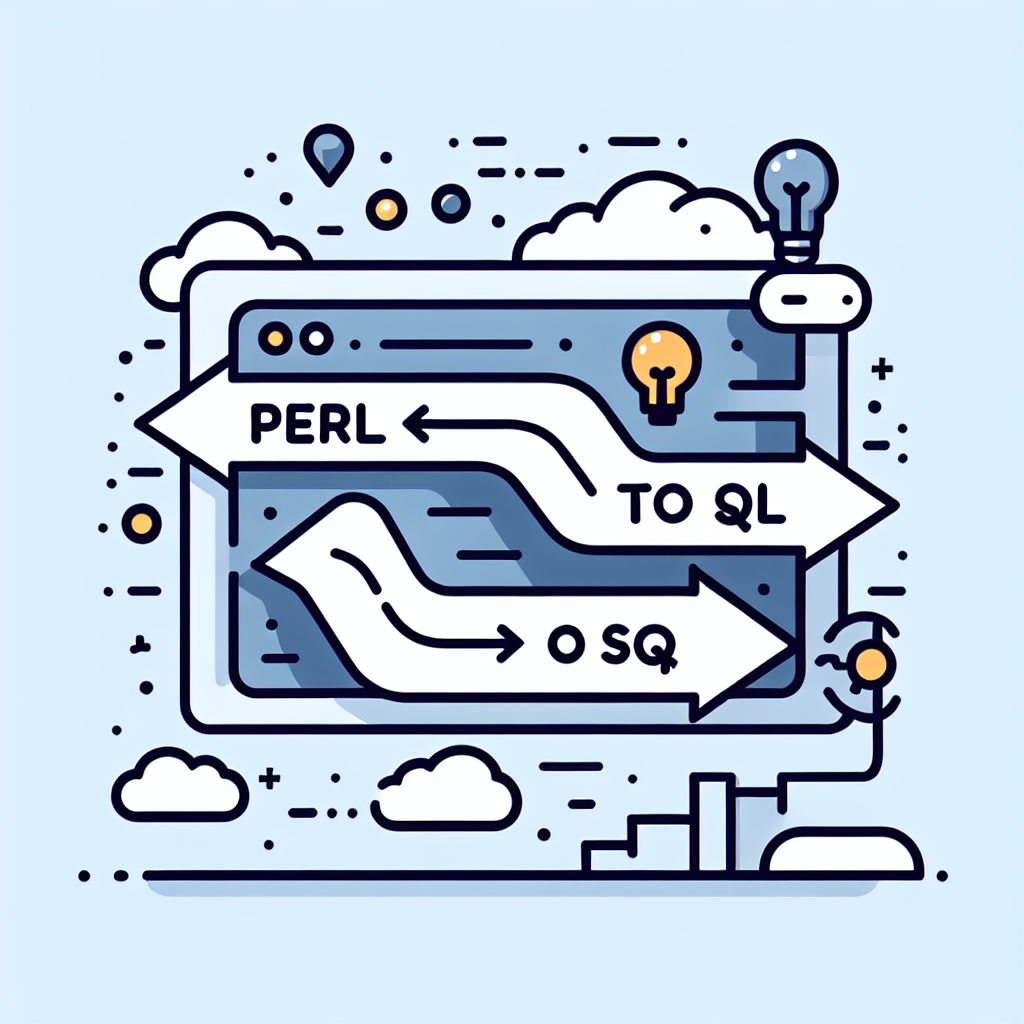Convert Perl to SQL Effortlessly | Perl2SQL Tool
Effortlessly convert Perl scripts to SQL queries with our powerful tool. Enhance data management, streamline processes, and boost productivity today!
Source Code
Converted Code
Output will appear here...
Unlock seamless data transformation with our Perl to SQL conversion tool. Ideal for developers and data analysts, this tool effortlessly translates Perl scripts into SQL queries, enhancing database management efficiency. Experience streamlined workflows and improved data manipulation with precision and speed.

Perl to SQL Converter Tool Link to this section #
The Perl to SQL converter tool is designed for developers needing to transform Perl scripts into SQL queries efficiently. This tool helps streamline database interactions by converting Perl code structures into SQL syntax. It's ideal for database administrators and developers working on data migration, application modernization, or integrating Perl-based applications with SQL databases.
Features Link to this section #
- Automated Conversion: Eliminates manual coding errors by converting Perl scripts directly to SQL queries.
- Supports Various SQL Dialects: Compatible with MySQL, PostgreSQL, SQLite, and more.
- Code Optimization: Provides optimized SQL code for faster database performance.
- Interactive Interface: User-friendly design for easy use without extensive technical knowledge.
Usage Link to this section #
- Input: Paste your Perl script into the input field of the tool.
- Conversion: Click the 'Convert' button to initiate the transformation.
- Output: Retrieve the SQL query generated by the tool.
Example Link to this section #
Convert a Perl script into an SQL query effortlessly:
# Perl code
my $query = "SELECT * FROM users WHERE age > ?";
The tool converts it into:
-- SQL query
SELECT * FROM users WHERE age > :age;
Benefits Link to this section #
- Time-Saving: Quickly converts complex Perl scripts into SQL, reducing development time.
- Accuracy: Ensures precise syntax transformation, maintaining data integrity.
- Cross-Platform Compatibility: Works with diverse database management systems.
Additional Resources Link to this section #
Utilize the Perl to SQL converter tool to boost productivity and enhance the efficiency of your database management tasks. Its intuitive design and robust functionality make it an essential addition to any developer's toolkit.
Frequently Asked Questions
How can I connect a Perl script to an SQL database?
To connect a Perl script to an SQL database, you can use the DBI module. First, install the DBI and DBD::mysql (or the appropriate DBD driver for your database) modules. Then, use the DBI->connect method with the appropriate Data Source Name (DSN), username, and password to establish a connection.
What are some common Perl modules for interacting with SQL databases?
The most common Perl modules for interacting with SQL databases are DBI for the database interface and DBD::* modules like DBD::mysql, DBD::Pg, and DBD::SQLite for specific database drivers. These modules provide a consistent interface for database operations in Perl.
How do I execute an SQL query in Perl?
To execute an SQL query in Perl, first connect to the database using DBI. Then, prepare the query using the $dbh->prepare method, where $dbh is the database handle. Finally, execute the prepared statement using the $sth->execute method. You can fetch results using $sth->fetchrow_array or similar methods if it's a SELECT query.